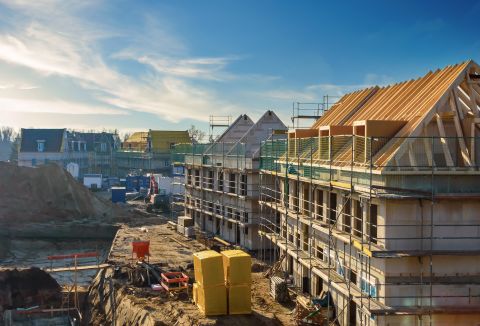Building Regulations in England & Parts L, F and O
With the transitional period now over, the updated 2022 Building Regulations Part L, Part F, and the new Part O, became legally enforceable for all new residential projects.
This is the biggest regulatory change the construction sector has seen in the last 40 years and a stepping stone in our transition away from fossil fuel systems toward decarbonised homes and the electrification of heat - and ultimately, the Future Homes Standard. This shift will impact the way we design buildings and specify technologies.
Have you decided which technologies to specify to achieve compliance for your next residential project?
The new English Building Regulations came into law on the 15th of June 2021. For projects with existing planning permission there is one year transitional arrangements period that applies on plot-by plot basis.
The updated Part L outlines the four compliance metrics for new developments: primary energy target, carbon emissions target, fabric energy efficiency target, and minimum standards for building fabric and building services.
The ventilation system choice under the updated Part F is linked to aritightness as we look to increase indoor air quality. New Part O offers modelling to help mitigate the risk of overheating in buildings.
We designed a simple guide to the changes to Part L and Part F, and the new Part O, and discuss what they may mean for your project.
Our range of HVAC solutions aim to provide future proof technologies to building projects over various sectors.
Request our presentation on Building Regulation changes that answer the most frequently asked questions.
Latest News
Our news section cover building regulations, what the changes to Part L, F, and the new Part of O entail, and what this means for HVAC specification.

Storage and the Net Zero Energy Supply Chain
Representatives from Government, the Committee on Climate Change, manufacturers and many other stakeholders from across the electricity supply chain met last week to discuss the future of our industry, country and ultimately, the planet.

The six main heat pump myths debunked
Heat pumps. and heat pump based solutions such as ambient loops or hot water heat pumps are proven technologies considered one of our main routes to achieving compliance with the new, 2022 Part L of the Building Regulations. The increased focus on heat pumps, including air source heat pumps, both monobloc and split system, has intensified the discussion on this low carbon technology that is sometimes misunderstood.
What are the four new compliance metrics embedded in the updated 2022 Part L?
We have written a series of four blogs to help understand the changes and what they mean for residential developments. Each blog will introduce one of the four compliance metrics and consider what these mean for modern construction.











